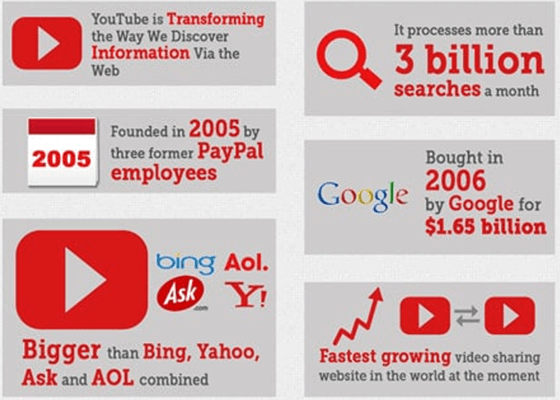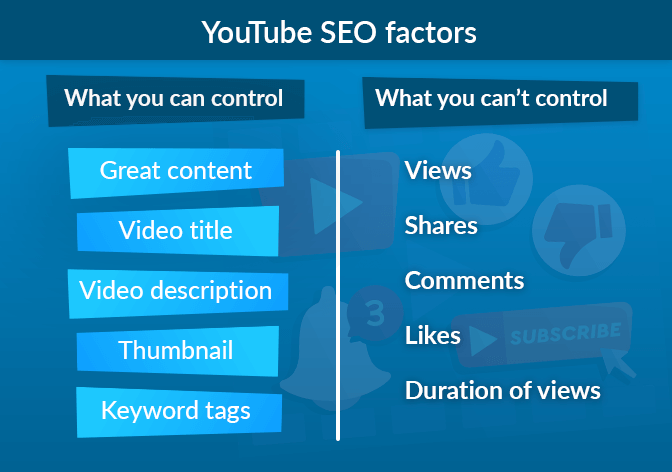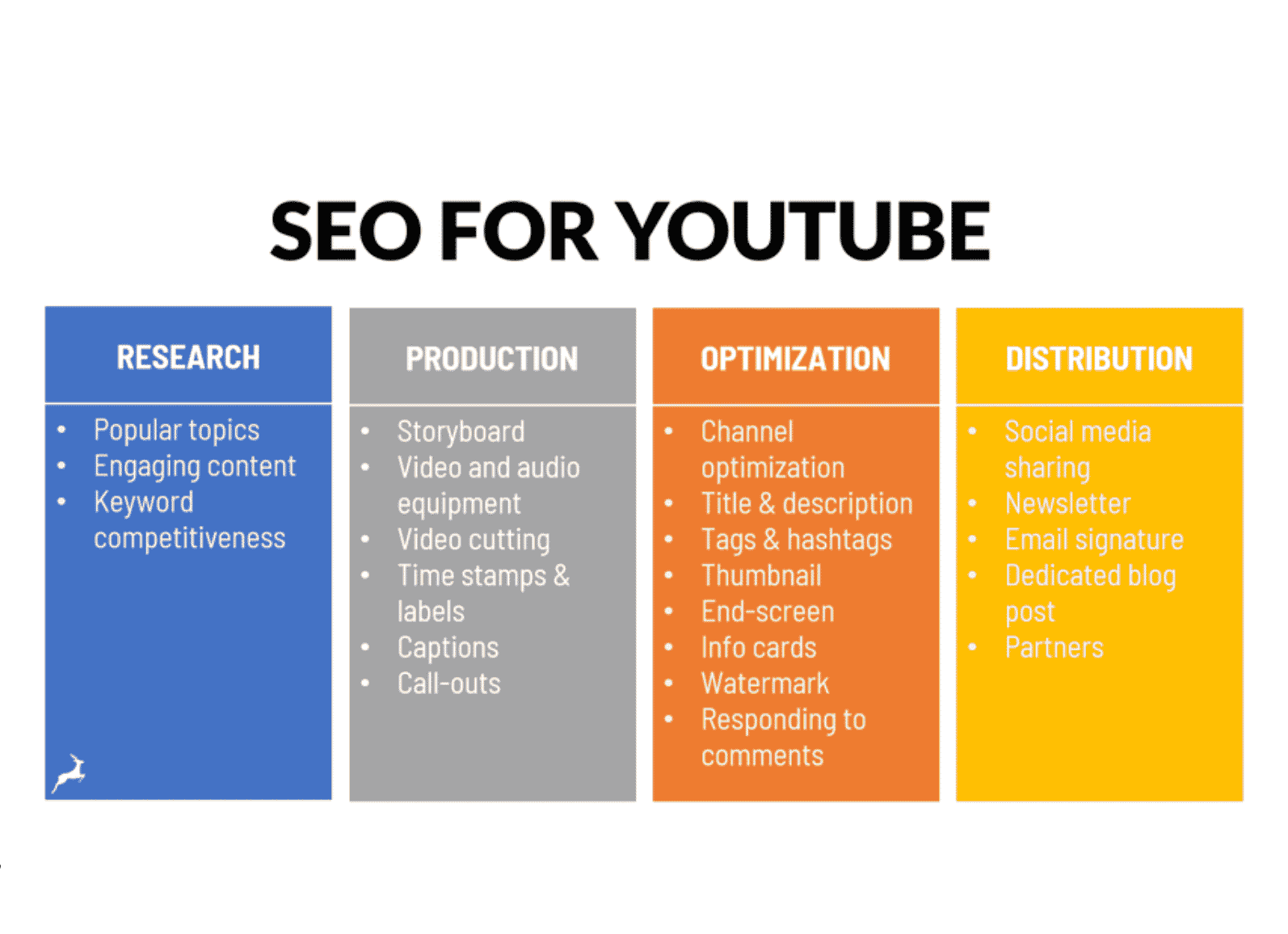YouTube is the second-largest search engine with more than 3 billion searches each month. It is a powerful advertising platform that is appropriate for all types of businesses. The main issue with YouTube marketing is that content creators spend their time and energy curating material that does not get views. Getting videos to rank in Google and YouTube searches is crucial in this case.
Ranking your YouTube video on Google will not only increase views but also send a good amount of traffic to your website, which will boost conversions and engagement rates. This post will cover all the details on Video SEO and the process of ranking your YouTube video on Google.
Page Contents:
What is Video SEO?
It is the process of getting more views on videos from Google and earning traffic to your website via videos. It comprises optimizing your video in such a manner that it gets indexed and ranked on the SERPs for the targeted keyword.
If you optimize your video for any keyword that does not have any video results in Google, you can only get the general traffic from YouTube. Instead, if you optimize for video keywords, you will get direct traffic to your video from both Google and YouTube. Therefore, to increase rankings at a fast pace, it is recommended to optimize your video on both YouTube and Google.
How to rank YouTube videos on Google?
Select the medium
First, you need to analyze whether you would direct users to your video on YouTube or the embedded version of the video on your site. Selecting a medium depends upon your business model. For instance, in the case of a consumer goods brand, it is advisable to drive traffic to YouTube else in the case of an eCommerce website or service industry, the best practice is to embed videos on your website.
If you are directing traffic to your video on YouTube, then optimization will happen within the YouTube framework. If you are targeting traffic on your website, you must incorporate video SEO on your site. In most cases, Google ranks as per its automatic algorithm. The exact factors that decide which version of the video will rank are unknown. Some of the ranking factors may relate to YouTube channel strength, click-through rate, number of views and subscribers, domain strength, etc.
Identify videos with traffic potential
Find out videos that can drive traffic from Google. It does not depend on the number of views a video receives on YouTube. In order for a video to attract views, it must have a good search volume and people must be interested to watch a video about the topic instead of reading it.
Brainstorm and explore topics
Assess the audience behavior by evaluating questions such as will they prefer watching a video or reading about it. Whether people are searching for that particular topic on Google. You can even search for the ‘root’ keyword to check whether video results are getting displayed on SERPs or not. For example, if you search for how to do SEO, there is a greater probability that videos will be displayed on SERPs.
However, if you search for what is SEO, the results will be of websites and blogs and will not include videos. Hence, it can be concluded that results on SERPs mostly depend on the query and keywords entered on Google. Also, keywords related to tutorials and reviews mostly comprise video results on SERPs. Next, you need to analyze the number of searches about the particular topic on Google. You can identify the search volume using a keyword research tool.
Optimize the video details on YouTube
It is crucial to match the users’ search intent with the targeted keyword. A general rule of thumb here is that the video content should be easy to understand, simple, and eye-catching to the reader. Optimize your video before uploading it on YouTube. Once your file is ready for upload, go to the raw file, right-click, and select ‘Get Info. Next, add tags related to the video content. Under the tab ‘Name and Extension’, name your file with the niche keywords. Some of the steps to optimize video details on YouTube are:
Title
YouTube has a Title limit of 100 characters but for better SEO performance, limit the character count up to 70 characters. The title should not always be keyword-oriented but should match the readers’ search intent and aim to solve the query of the user.
Description
The description helps in understanding the context of the video. We can draft YouTube descriptions in a more detailed manner than Meta descriptions. Cover important information in the first 300 lines of the description so that users don’t miss reading it. Make sure that the target keyword is added to the initial sentences.
Tags
YouTube Tags provide additional information in the video’s context. Avoid adding too many tags and ensure that the Tags apply to the video context.
Include the Key moments in the video
Key moments are additional links that are displayed in the SERPs beneath the video listing. They function as chapters directing users to different video sections. Adding key moments is simple. You just need to write a time code and chapter name list in the video description that is separated by a hyphen.
Upload Subtitles
YouTube adds closed captions on each video by default. However, these can have a lot of grammar mistakes and other errors. Hence, the best practice is to upload the video transcript so that viewers understand your page content even without audio. If you cater to a multinational audience, we advise it to upload subtitles in multiple languages. You can include subtitles either by uploading a time-coded .srt file or writing them. You can manage this from the Subtitles menu in the YouTube studio.
Create an appealing thumbnail
Thumbnail attracts the potential clients to the video so make sure it is enticing to the users. Instead of selecting the thumbnail by default, try to craft an eye-catching and unique thumbnail that entices users to open the video. Ensure that the video is an incorrect aspect ratio in the 16:9 format. High-performing thumbnails have bright colors and notable contrast with text overlays and faces. To know which of your thumbnails are performing well, view the traffic sources report on YouTube Analytics.
Add Timestamps in the video
Timestamps show where a particular clip starts in the video enabling you to reach directly that section of the video. It is in the [hour]:[minute]:[second] format. You can remove the [hour] if it is not required. Make sure to add the Timestamps in chronological order in the video description. Avoid placing it in a pinned comment. Remember to include a Label that briefly describes the video content.
Links
Evaluate how you can garner natural links to a page or video in question. You can conduct promotional campaigns to earn more click-through rates and generate shares across the internet. Add links to your social media accounts such as Facebook, Twitter, Instagram, etc. This enables search engines in discovering your other active social media profiles on the web. Make sure to place the links in a natural manner and avoid stuffing them in the page content.
When used appropriately, YouTube can be a great platform. Success depends on making the content more visible and getting it in front of the right audience at the right time. The easiest method to have videos appear in search results is to make them entertaining and compelling for viewers while also adding value and satisfying their search criteria.


